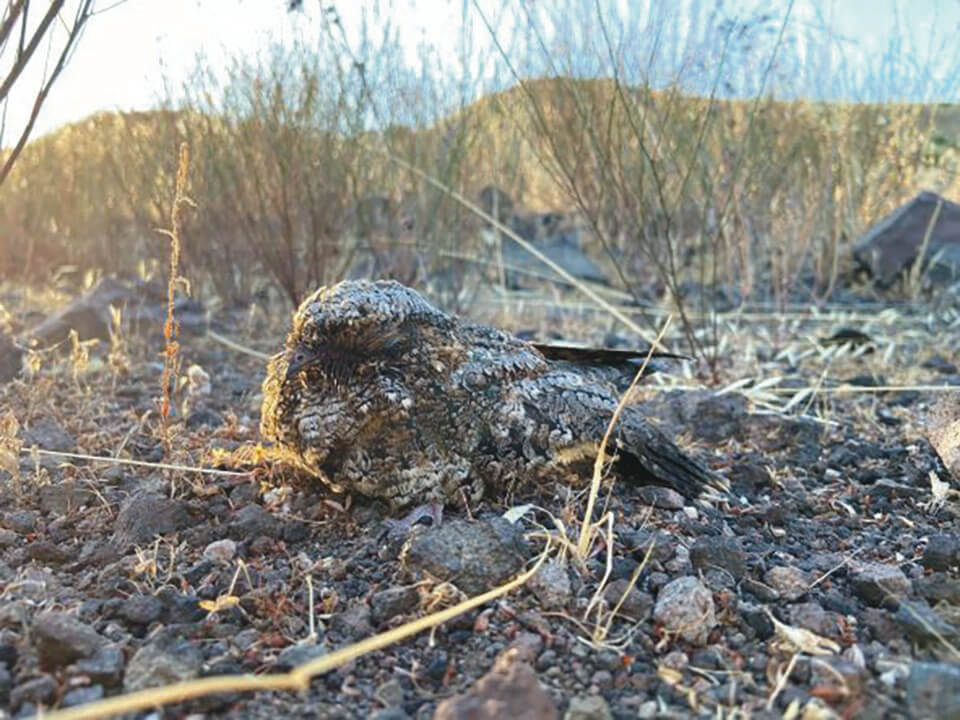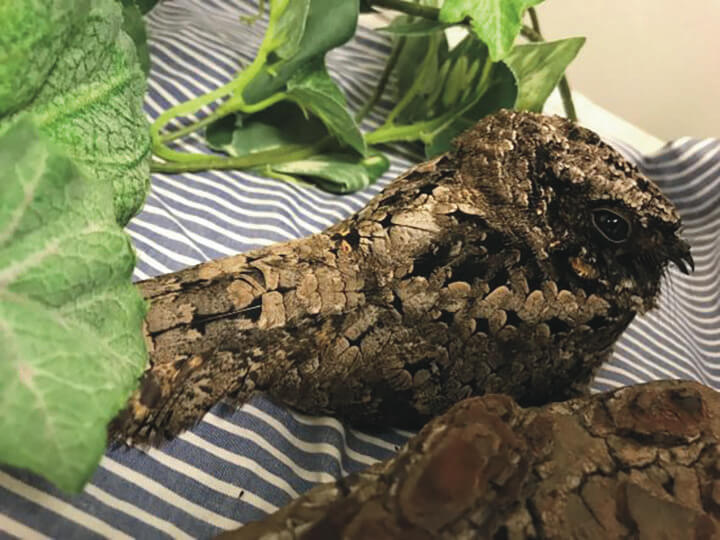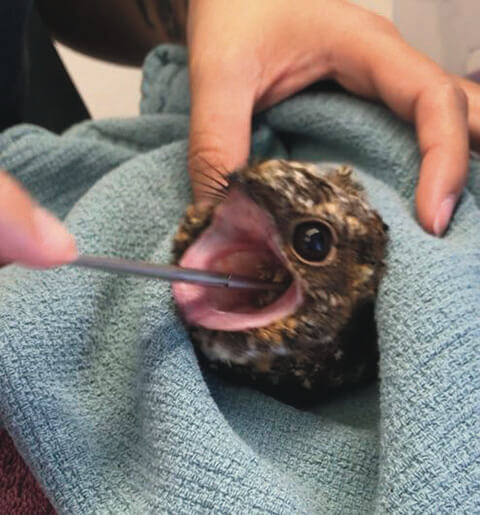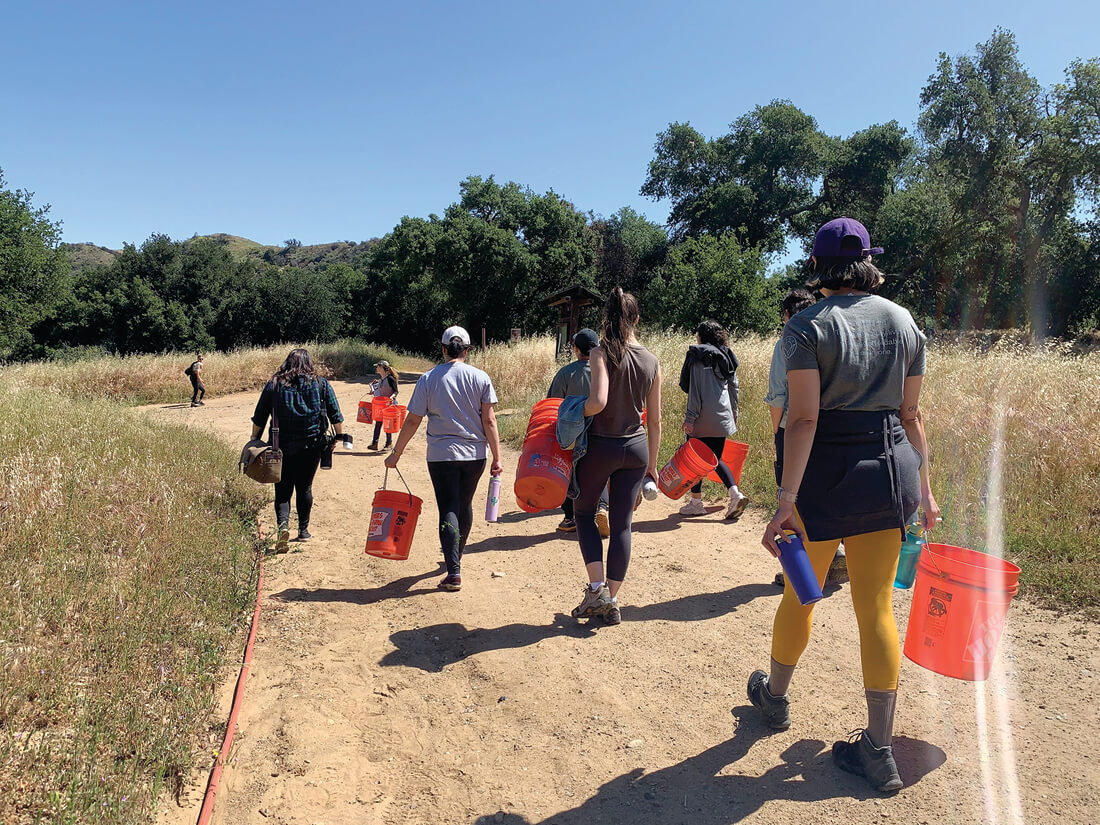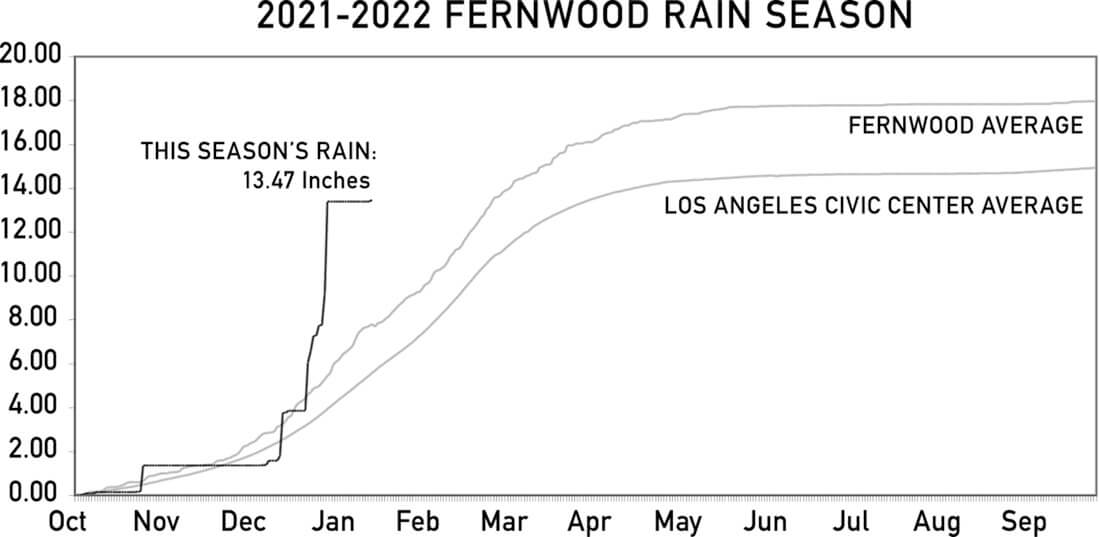The Owl You Probably Never Heard Of
Around this time each year, the California Wildlife Center (CWC) begins to get calls from the public about orphaned baby owls. It is not the season for baby owls, so what rescuers have actually found are rarely seen, highly camouflaged, evening dwelling adult Common Poorwills.
Common Poorwills are slightly smaller than doves and active in the evening when they are seeking out flying insects. While in flight, the birds open their large mouths and gulp them down. During the day, they hang out on the ground and are protected only by their camouflage. The grey and black mottled pattern blends in perfectly with the ground cover.
Common Poorwills go into torpor, a type of mini-hibernation, during the day when they can be vulnerable to humans who think they are helpless, groggy baby owls. This happens a few times during the year. We usually give the birds who are brought to us in this situation a thorough exam and then release them when it is dark. Unfortunately, this was not the case for our most recent Poorwill patient from Monrovia via our friends at Pasadena Humane.
On October 21st, a dedicated volunteer transporter from Pasadena Humane drove all the way to our center in Calabasas with a Common Poorwill that had a laceration on one wing and some blood in his mouth. Did this bird have an aerial collision? Was it another victim of a cat attack? We couldn’t really tell. The wounds had been cleaned by the staff at Pasadena Humane who also prescribed anti-inflammatory medicine and antibiotics. These meds will continue until the patient’s wounds are healed. The next step for this Common Poorwill will be spending some time in one of our aviaries to acclimate to the weather outside and build flight muscles back. During the entire time in care, Common Poorwills must be hand-fed frozen crickets and formula every two hours from 8 a.m.-7 p.m. These birds do not eat on their own in captivity due to the highly specialized way they hunt for insects.
CWC received 16 Common Poorwills in 2020, and 11 so far this year. They belong to the unique looking Caprimulgidae family of birds commonly referred to as nightjars, whip-poor-wills, and goatsuckers! Because they are insectivores and insects can be hard to find in the cold, Caprimulgids can go into torpor when temperatures are harsh. While the normal body temperature for a bird this size is 104°, Common Poorwills can lower their body temperatures to 41° Fahrenheit! They are able reduce their oxygen intake by 90 percent, allowing them to use much less energy.
If you come across a Common Poorwill in need while you are in an urban/suburban habitat, place the bird in a box with holes, close it up, and call CWC at (310) 458-WILD immediately.
If you see one on the ground while hiking, it is best to leave them alone as they may only be resting up and getting ready for nighttime insect hunting!
To volunteer or donate to the California Wildlife Center: cawildlife.org
The Common Poorwill’s gray and black mottled pattern blends in perfectly with the ground cover.




